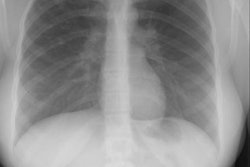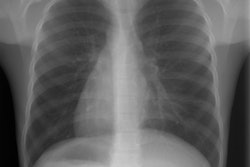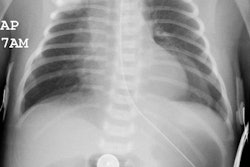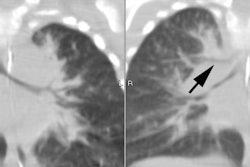Tracheal Stenosis:
View cases of tracheal stenosis
Clinical:
Tracheal stenosis may be either acquired or congenital. Acquired tracheal stenosis is far more common than the congenital form. Patients present with stridor, wheezing, feeding difficulties, and cyanosis. Etiologies of acquired stenoses include: Vascular rings, tracheoesophageal fistula, and the result of intubation or tracheostomy.In congenital tracheal stenosis there is a fixed narrowing of the tracheal lumen due to the presence of a complete cartilagenous tracheal ring. The lesion can be segmental, diffuse, or funnel-shaped and there can be an association with a tracheal ("pig") bronchus (the stenosis occurs distal to the take-off of the bronchus). Patients with cartilagenous ring abnormalities frequently have associated anomalies of the respiratory tract, esophagus, skeleton, and heart. Balloon dilatation may be an effective palliative procedure with symptomatic improvement and increased lumen diameter in patients with congenital or acquired tracheal and bronchial stenoses.
X-ray:
On CXR the lungs may be normal or hyperaerated and the area of tracheal narrowing may be seen.REFERENCES:



